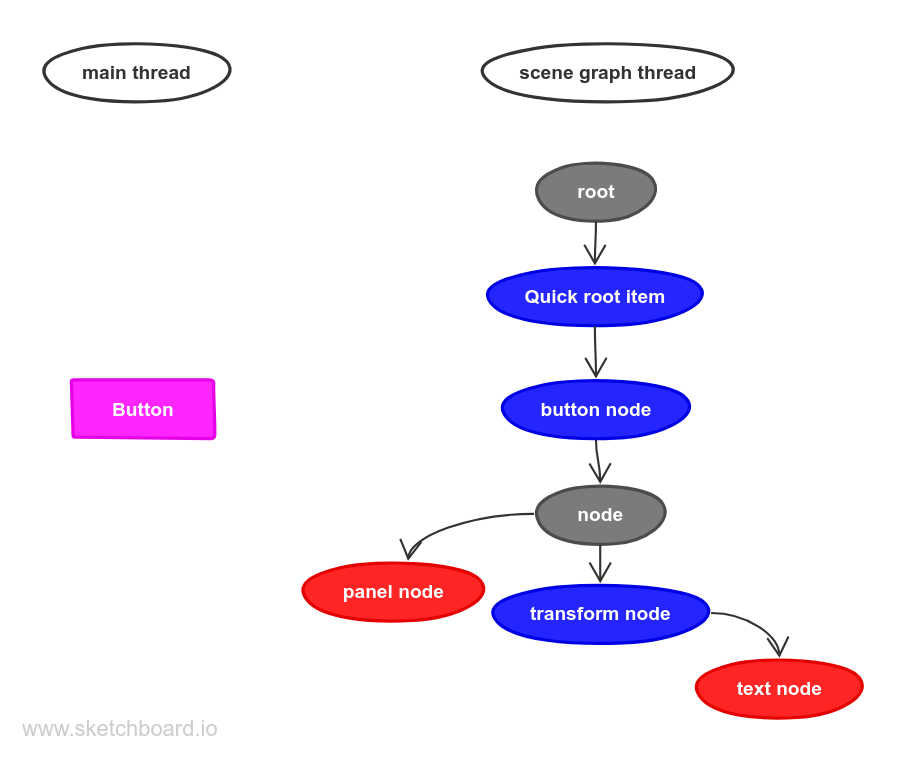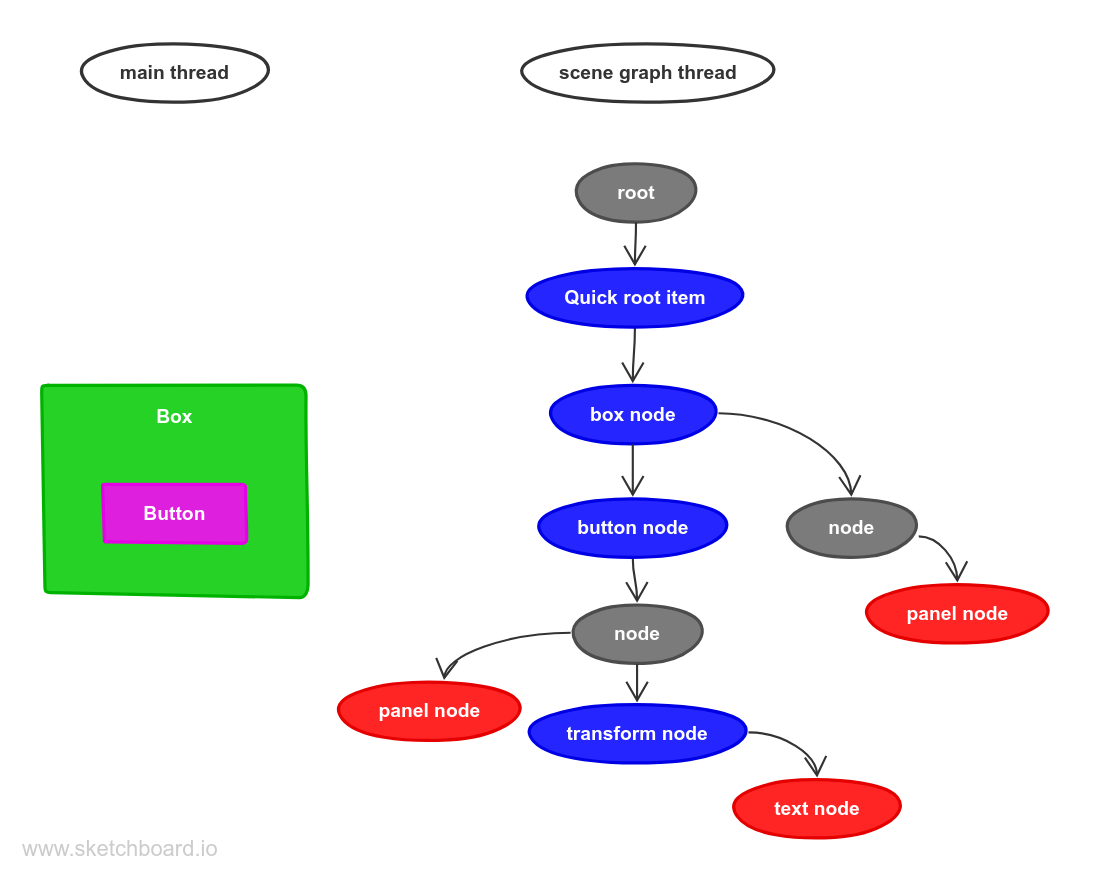QSkinny - Scene graph representations of controls
Each control that is displayed on the screen consists of one or more scene graph nodes. Those nodes can be either basic shapes like rectangles, or they can contain other information like positioning (used with transform nodes), opacity or clipping.
The source code below shows a minimal example displaying a button:
auto* button = new QskPushButton( "button" );
QskWindow window;
window.addItem( button );
window.show();For this example, the scene graph will contain the following nodes:

The top two nodes (root and Quick root item) are created for every
QtQuick application. The button itself consists of 5 nodes in our case:
One root note (button node), one node just to group its children (just
labeled node), one geometry node for drawing the background (panel
node), one transform node for setting the position of the text and
another geometry node for displaying the text (text node).
For an explanation of the different scene graph node types, see the Qt documentation of QSGNode::NodeType.
The example above is the simplest form of a button, in practice there might be more nodes per control, for instance an opacity node or a clip node.
Now we add more elements to the UI by putting the button inside a layout
(QskBox):
auto* box = new QskBox;
auto* button = new QskPushButton( "button", box );
QskWindow window;
window.addItem( box );
window.show();Then the scene graph has the following structure:

Here we can see that since the box is a parent of the button, the box
node is also a parent of the button node in the scene graph. Also, the
box has two child nodes: The button, which is the same as in the earlier
example, and a node for the panel of the box, in case the panel itself has a
background color.
In a more complicated UI with multiple elements and more advanced layouts, the number of scene graph nodes can be quite high. This is why QSkinny tries to create as little nodes as possible and reuse as many as it can.